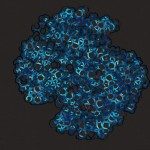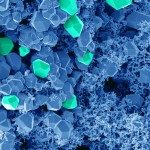Présentation
Protein secretion in bacteria is highly specific. Substrates secreted via the Type II secretion nanomachines are fully folded prior to secretion and are specifically recognized in their native state. In some cases, they even adopt a quaternary structure, as in the case of cholera toxin from Vibrio, which is a hetero-hexamer. The secretion signal is therefore likely to be structural in nature and its specific recognition might involve successive interacting partners along the secretion pathway. To understand secretion specificity and to harness T2SS for secretion of designed synthetic substrates, it is essential to understand the recognition mechanism at the molecular level. To achieve this, the Synergy_T2SS project focuses on a comparative analysis of secreted substrates and their interactions with the T2SS complexes, notably with their dynamic part – the pseudopilus. This study will be conducted in three model bacteria, Klebsiella, Pseudomonas and Dickeya, in collaboration with the teams of R.Voulhoux and V. Shevchik.










